Are you considering getting a white tattoo but are not sure how long it will last? You’re in the right place! As time has passed, white tattoos have gained popularity, offering various styles ranging from simplistic designs to stunning artistic creations. But with any type of initial body modification, there is a concern about longevity and durability. In this blog post, we’ll look at what determines how long your white tattoo will last and showcase some examples that prove they can stand the test of time. Let’s dive into the world of white ink tattoos and take an informed plunge!
What Is a White Tattoo?
A white tattoo, as the term implies, involves using white ink exclusively in the tattooing process. Unlike traditional tattoos that use a variety of colors or black ink, white tattoos rely on a single color – white – to create intricate designs and patterns. White tattoos first started gaining popularity in the early 2000s as a subtler alternative to their more vividly colored counterparts. They were initially favored by those who wanted a tattoo but required a more discreet or understated design due to professional or personal reasons.
When the white ink is injected into the dermis, the second layer of the skin, it creates a tattoo that seems as though it has been engraved or marked onto the skin. This offers a remarkable and distinctive visual impact. It’s a tattoo style that has been embraced by countless individuals worldwide, thanks to its delicate, barely-there visual appeal.
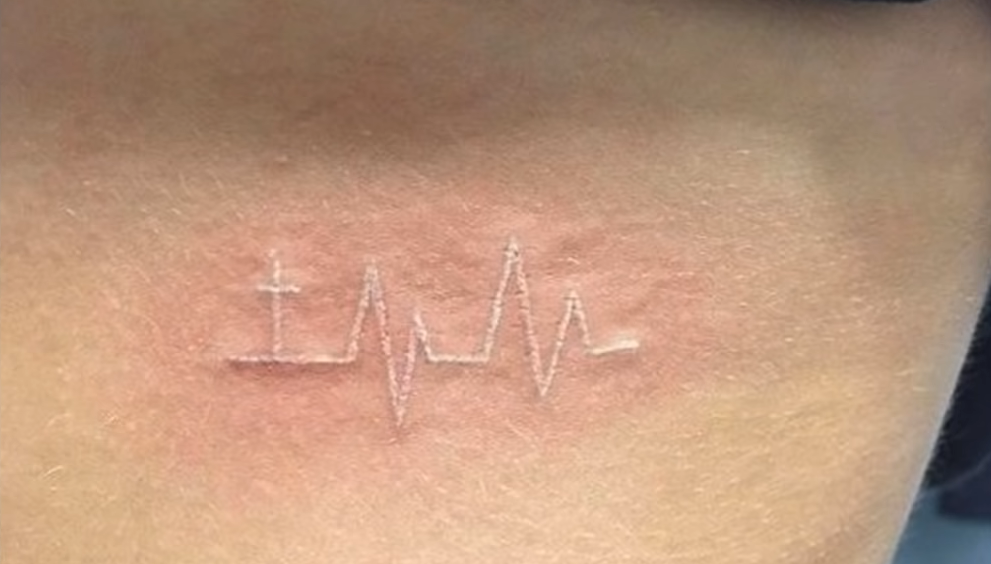
White Tattoos Pros and Cons
Pros of White Tattoos
- Subtlety and Sophistication: White tattoos are incredibly subtle, often appearing as faint, sophisticated designs or inscriptions. Their understated appearance makes them an ideal choice for those who value the visual charm of tattoos but prefer a more restrained aesthetic.
- Personal Expression: Tattoos are a form of personal expression. White tattoos, due to their subtlety, can allow the individual to express themselves without drawing too much attention to their body art.
- Professional Considerations: Given their subtle nature, white tattoos can often be suitable for individuals working in professional environments where visible tattoos might be frowned upon.
Cons of White Tattoos
- Fading Concerns: White tattoos are known to fade more quickly than tattoos done with black or colored ink. While, in some cases, this can add to the tattoo’s subtlety, in others, it may result in a tattoo that becomes barely visible or distinguishable over time.
- Healing and Aftercare: White tattoos require a slightly more complex healing and aftercare process. They can take longer to heal, and there’s an increased risk of the tattoo healing unevenly.
- Skin Tone Considerations: While white ink can look stunning on lighter skin tones, it may not show up as well on darker skin tones. It’s essential to consult with a professional tattoo artist to ensure the white ink will show up well on your specific skin tone.
Remember, deciding to get a tattoo is a significant decision that should not be taken lightly. Make sure to conduct thorough research and gather all the necessary information about the advantages and disadvantages before finalizing your decision.
Things to Know About White Ink Tattoos
While white ink tattoos present a unique aesthetic, it’s crucial to discuss your design with a knowledgeable and experienced tattoo artist. They can help you understand how your design will adapt to the subtleties of white ink. Moreover, ensuring the longevity of white tattoos can be achieved through proper skin care, safeguarding against excessive sun exposure, and upholding a healthy lifestyle. Regular moisturizing can keep the tattoo looking fresh and sharp.
When it comes to the healing process, patience is key. Even though white tattoos might take longer to heal, resisting the urge to rush the process can prevent potential complications. Follow the aftercare instructions provided by your tattooist diligently.
In the end, the decision to get a tattoo should always be a personal one. If a white tattoo aligns with your aesthetic and personal values, and you’re willing to take the necessary aftercare steps, it could be an excellent way for you to express yourself.
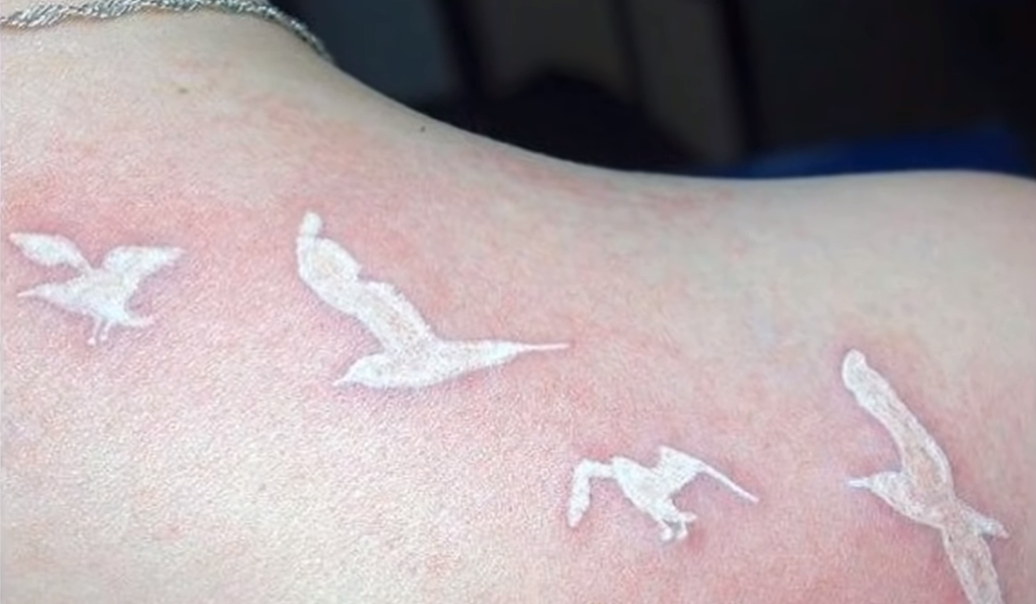
How Long Do White Ink Tattoos Last?
White ink tattoos, much like their colored or black ink counterparts, can last for many years with proper care. However, due to the unique qualities of white ink, they may start to fade or yellow over time. Factors such as the quality of the ink, the skill of the tattoo artist, your skin’s reaction to the ink, and your tattoo aftercare routine can all significantly affect the longevity of a white ink tattoo. Typically, they may last anywhere between 5 to 10 years before needing touch-ups. It’s crucial to maintain an open dialogue with your tattoo artist about what you can realistically expect in terms of longevity for your specific tattoo.
White ink tattoos possess a distinctive nature in that they require different pigmentation and are known to be more fragile than other colors of ink. The pigment is also thinner, which makes it more susceptible to fading or yellowing over time. This can be particularly true if you expose your tattoo to excessive sunlight or fail to properly care for it during the healing process. Keeping your tattoo out of direct sunlight and diligently moisturizing it with a quality product can help to protect its vibrancy for as long as possible.
Additionally, certain skin types may be more prone to white ink fading. If you have oily skin or are prone to excessive sweating, the pigmentation of your tattoo may fade at an accelerated rate. It’s important to discuss these factors with your tattoo artist beforehand so that you can work together to create a plan for how best to protect your white ink tattoo.
No matter what precautions you take, there is no guarantee that your tattoo will last forever. However, through proper care and maintenance, it can be a unique and beautiful piece of artwork on your body that you can cherish for years to come.
When it comes to choosing a design for your white ink tattoo, there are so many creative possibilities. From abstract shapes and patterns to intricate text-based designs, the freedom of expression that comes with this type of tattoo is limitless. So whether you’re looking for something that symbolizes your personal journey or a simple piece of art to admire, a tattoo made using white ink. has the potential to be a beautiful reminder of your commitment to self-expression.
If you are considering getting a such type of tattoo, make sure to research thoroughly and ask questions about your artist’s process. The more information you have ahead of time, the better prepared you will be when it comes time to commit to this beautiful and unique art form. With careful consideration, planning, and dedication to aftercare, a white ink tattoo can be a lasting and beautiful piece of artwork that you can cherish for years to come.
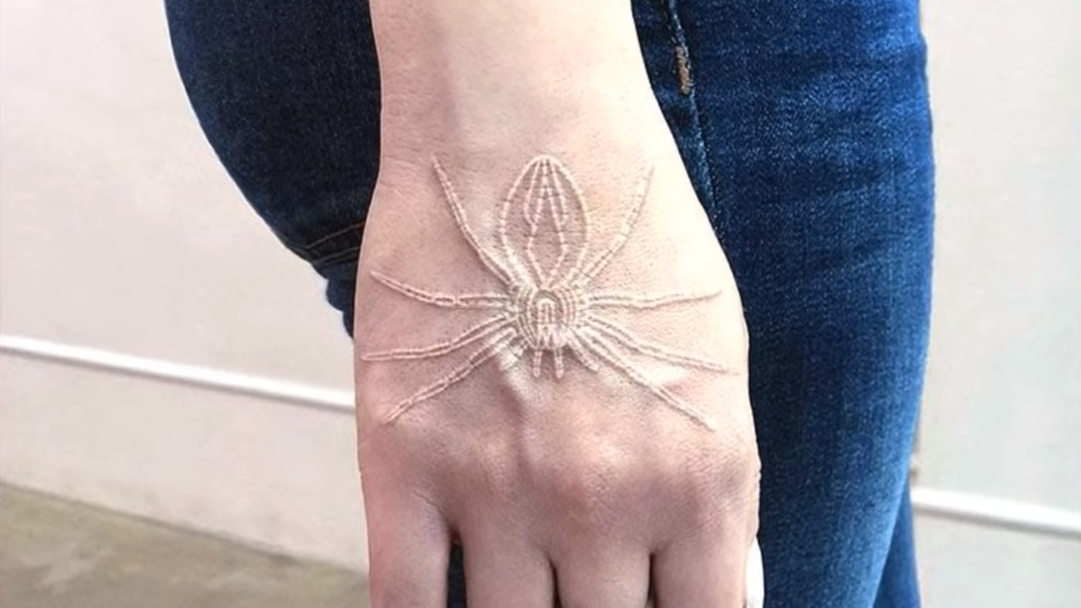
What does the hue consist of?
The hue of a white ink tattoo is essentially determined by the composition of the ink itself. Generally, white ink is a pigment composed of titanium dioxide, which is mixed with a carrier (typically water, alcohol, or witch hazel) that aids in injecting the pigment into the skin. [1] When applied appropriately by a professional, the resulting hue is a subtle white shade that can appear almost pearlescent, particularly when contrasted against darker skin tones.
The hue can also be influenced by the underlying skin tone, the healing process, and the age of the tattoo. For instance, in some cases, a white ink tattoo may take on a slightly yellow or gray hue over time. This can be due to factors such as sun exposure, the body’s natural healing process, or simply the natural aging of the tattoo. It’s crucial to remember that every person’s skin will interact with the ink differently, potentially leading to slight variations in the final hue.
In essence, the hue of a white ink tattoo is a combination of several factors: the ink’s composition, the individual’s skin tone, the healing process, the depth of application, and the age of the tattoo. Understanding these elements can help in managing expectations and maintaining the aesthetic appeal of your white ink tattoo for years to come.
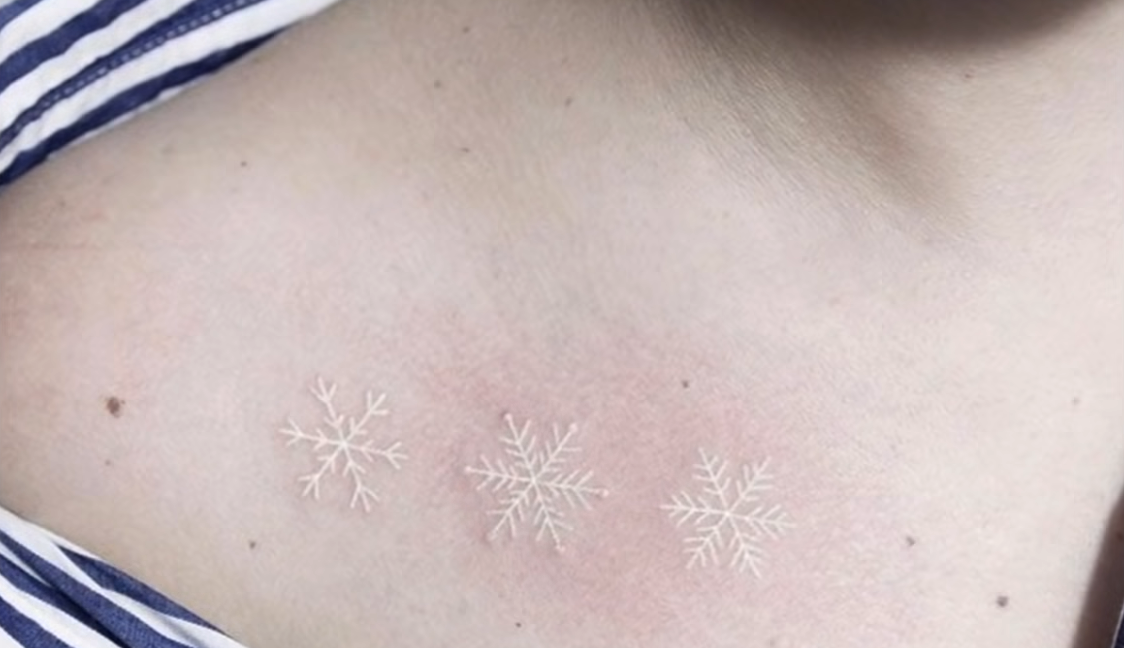
Is the application technique different?
Indeed, the application technique for white ink tattoos can differ notably from that of traditional tattoos. Typically, when an artist is creating a conventional tattoo, they outline the design in dark ink first before filling it in with color. However, with white ink tattoos, the process often involves tattooing without the initial outline, which demands a higher level of precision and skill from the artist.
Additionally, the artist must be diligent about the depth of application. As mentioned previously, if the white ink is applied too deeply, the tattoo can appear less white and more of a gray or light blue tone. Conversely, if the ink is not deposited deep enough, longevity can be compromised.
Therefore, when considering a white ink tattoo, it is important to select an artist who is experienced in this form of tattooing. They must understand how to balance the unique challenges of application depth, healing, and touch-ups to ensure the tattoo retains its original hue and appeal over time.
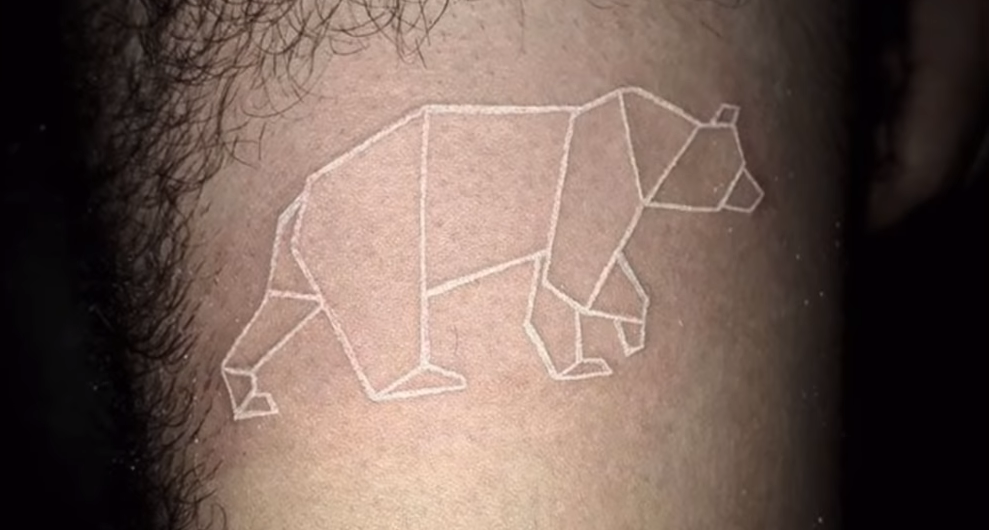
Why is that popular?
White ink tattoos have risen in popularity for a multitude of reasons, each as unique as the tattoos themselves.
First and foremost, the aesthetic appeal of white ink tattoos is undeniable. They possess a subtlety that traditional tattoos lack, offering a more minimalist and understated style. This can be particularly appealing to individuals who desire a tattoo that is both significant and personal to them, but not necessarily prominent or conspicuous. Additionally, the light, almost ethereal appearance of white ink tattoos is often perceived as more feminine, making it a popular choice among women.
White ink tattoos also offer a distinct advantage for those who wish to have a tattoo but are concerned about the potential impact on their professional image. Given their subtle nature, these tattoos are less likely to be noticeable in a professional setting, making them an excellent choice for those in more conservative lines of work.
Finally, white ink tattoos are often seen as a more artistic form of body modification. The challenges associated with applying these tattoos and maintaining their original hue over time add an artistic dimension that is absent in many traditional tattoos. This, combined with the personal significance and unique aesthetic these tattoos provide, contributes to their rising popularity.
In summary, the popularity of white ink tattoos can be attributed to their subtlety, versatility, and artistic appeal, making them a trendy choice for individuals seeking a unique and understated form of body art.
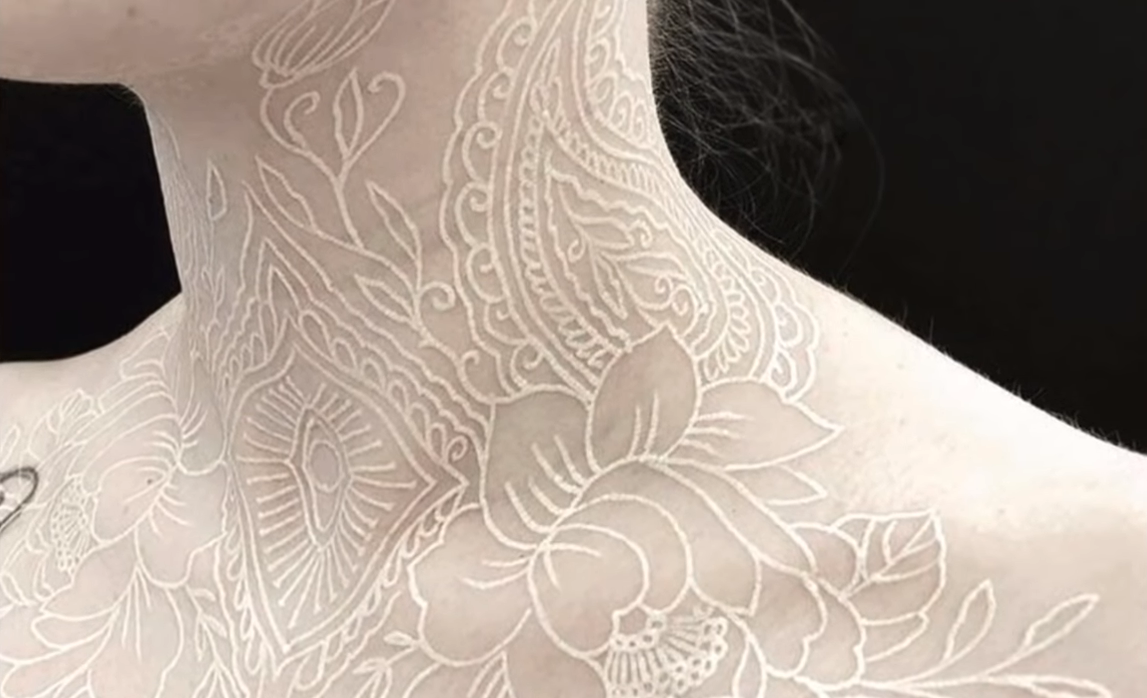
Are White Ink Tattoos Difficult for Laser Removal?
Laser removal of white ink tattoos does pose distinctive difficulties.The main cause behind this is the method through which laser tattoo removal functions. The process relies on the laser’s ability to break down tattoo pigment, allowing the body’s immune system to gradually eliminate it. Traditional tattoo inks, like black and red, absorb all wavelengths of light, making them easier to break down with lasers.
White ink, however, reflects all wavelengths of light, making it more difficult for the laser to target and break down the pigment. This means that removing a white ink tattoo can require more sessions than a tattoo made with traditional ink. It’s important to note that even with multiple sessions, complete removal may not be possible. [2] In fact, in some cases, the laser can cause the white ink to darken instead of fade, due to a process known as oxidation.
So, while this type of tattoos may offer advantages in terms of aesthetics and subtlety, their removal can be more complicated and less predictable than traditional tattoos. As always, it’s important for individuals to carefully consider the long-term implications before deciding to get a tattoo of any kind.
Price of White Tattoo
While the cost of a white ink tattoo can vary widely depending on a number of factors, it is generally more expensive than a traditional tattoo. This is due to the specialized skills and experience required to successfully apply white ink, as well as the typically higher cost of the ink itself.
In addition to the initial cost of the tattoo, it’s also important to consider the potential costs associated with removal. As previously mentioned, white ink tattoos can be more challenging to remove than traditional tattoos, which can lead to a higher number of required sessions and, consequently, a higher overall cost. The cost of removal sessions for tattoos can vary depending on factors such as tattoo size and location, ranging from $200 to $500 per session. Therefore, the total cost of removal could potentially run into the thousands.
These are all important factors to consider when contemplating a white ink tattoo. As always, it’s recommended to speak with a professional tattoo artist to get a better idea of the potential costs associated with your specific design and location choice.
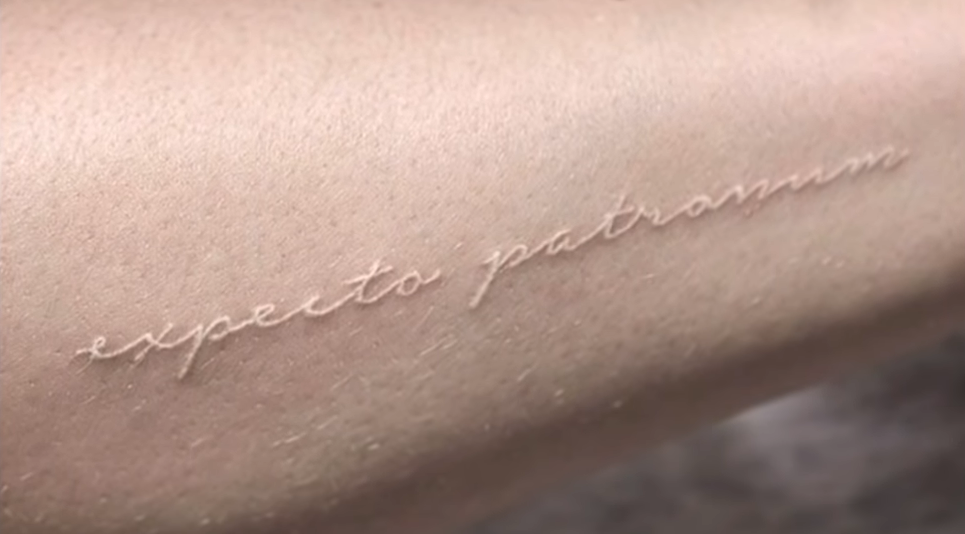
Tips How to Take Care of Tattoos
- Keep It Clean: Immediately after getting your tattoo, ensure you clean the area gently with lukewarm water and mild, liquid antibacterial soap. Avoid scrubbing the area.
- Moisturize Regularly: Use a high-quality fragrance-free lotion or tattoo aftercare product to keep your tattoo moisturized. This helps in the healing process and maintains the brightness of your tattoo.
- Avoid Sun Exposure: Extended sun exposure can cause your tattoo to fade quickly. Therefore, make sure your tattoo is covered or use strong sunscreen when going outside.
- Avoid Soaking: During the healing process, avoid soaking your tattoo in water. This means avoiding swimming pools, hot tubs, and other bodies of water.
- Avoid Scratching: It’s normal for your tattoo to itch during the healing process. However, avoid scratching or picking at it. Instead, gently tap the area or apply more lotion.
- Proper Nutrition and Hydration: Eating a healthy diet and staying hydrated can aid in healing. Foods rich in Vitamin A and Vitamin C can promote skin health.
- Avoid Tight Clothing: Wear loose clothing around your tattooed area to avoid rubbing and irritation during the healing process.
- Follow Your Artist’s Advice: Different types of tattoos might require different aftercare. Always follow the aftercare advice given by your tattoo artist.
- Annual Touch-ups: Consider getting your tattoo touched up annually to maintain its vibrance.
- Healthy Lifestyle: Maintain a healthy lifestyle. Alcohol, drug abuse, or a poor diet can affect your skin’s health and the appearance of your tattoo.
Frequently Asked Questions
Do white tattoos fade completely?
White tattoos do not generally fade completely, but they do fade faster than tattoos with darker ink. Also, they may become less visible over time, especially on lighter skin tones. It’s essential to remember that each person’s skin responds differently to tattoos and aftercare plays a significant role in how well the tattoo will age.
Do white tattoos fade quickly?
Yes, white tattoos tend to fade quicker than tattoos with darker ink. This is because the white ink is less dense and not as deeply absorbed by the skin. Therefore, it may not hold up as well to sunlight, time, and the body’s natural healing process. Taking good care of your tattoo, especially in the weeks following the procedure, can help mitigate these effects. However, even with optimal care, white tattoos may need more frequent touch-ups than those with darker colors.
Do white tattoos turn yellow over time?
Yes, white tattoos can turn yellow over time. This discoloration can occur due to various factors such as aging, sun exposure, and lifestyle habits like smoking. The ink may also change in response to the body’s natural healing and aging process. However, maintaining proper tattoo aftercare and lifestyle habits can help mitigate this effect. Touch-ups from a professional tattoo artist can also help maintain the color and vibrancy of a white tattoo.
Do white tattoos turn brown?
White tattoos can sometimes appear brown or take on a slightly brownish hue over time. This change can result from several factors including sun exposure, the body’s natural healing process, or the mixing of white ink with a person’s melanin or residual ink from past tattoos. It’s essential to follow proper aftercare procedures and protect the tattoo from excessive sun exposure to minimize these effects. Regular touch-ups can also help maintain the original color of a white tattoo.
Useful Video: White Ink Tattoos
Conclusion
In conclusion, while white tattoos offer a unique and subtle aesthetic, they come with their own set of challenges including quicker fading and potential discoloration over time. These issues can be mitigated to some extent with proper aftercare and regular touch-ups. However, those choosing white tattoos should be prepared for the possibility of more frequent maintenance compared to tattoos with darker inks. Ultimately, the decision should be made with a thorough understanding of these considerations and in consultation with a professional tattoo artist.
References:
- https://xtremeinks.com/ru/blogs/artists-corner/what-makes-a-safe-tattoo-ink
- https://www.atlaserlights.com/blog/2017/11/20/can-you-remove-white-tattoos/





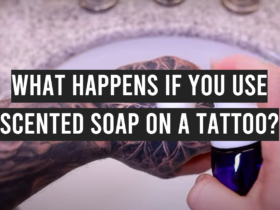
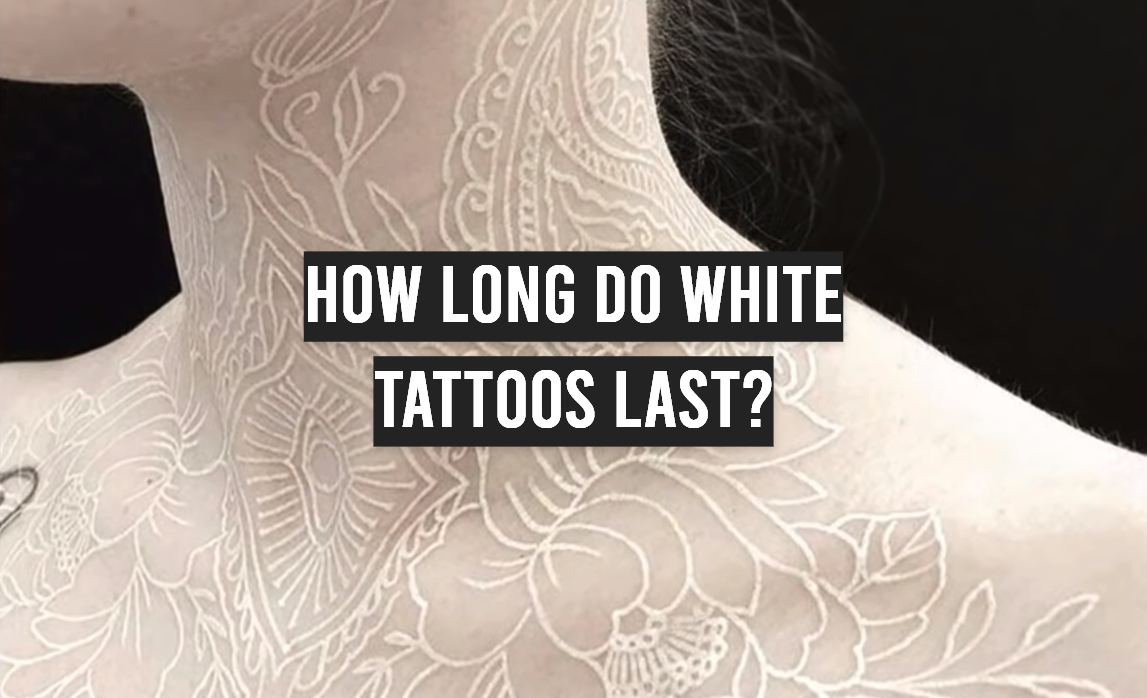




Leave a Review